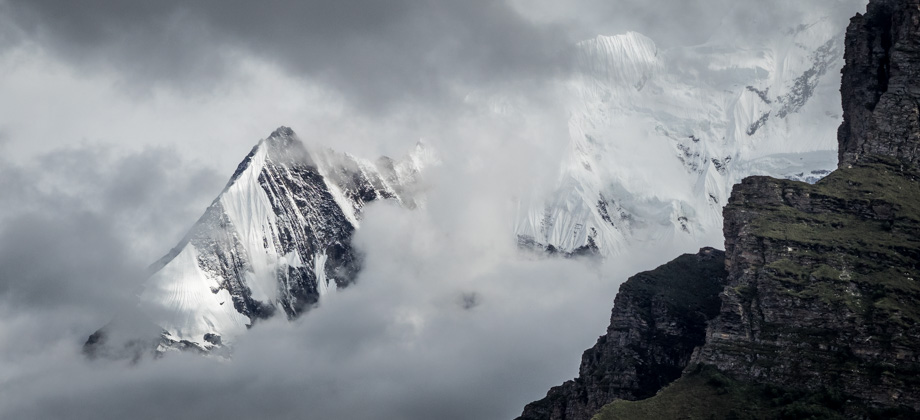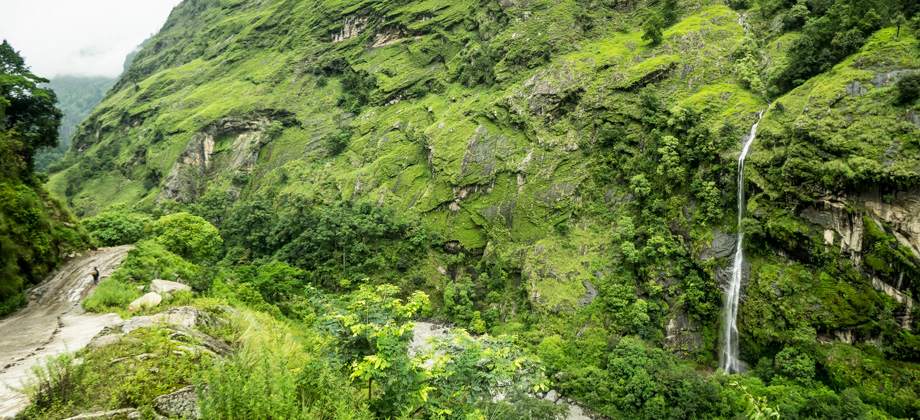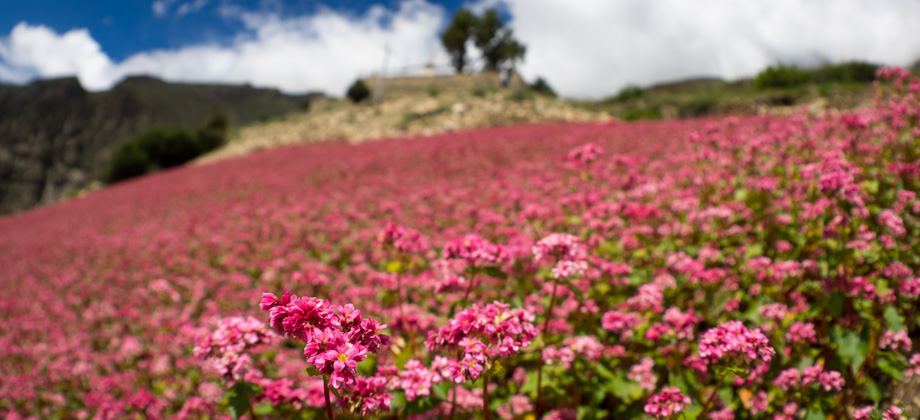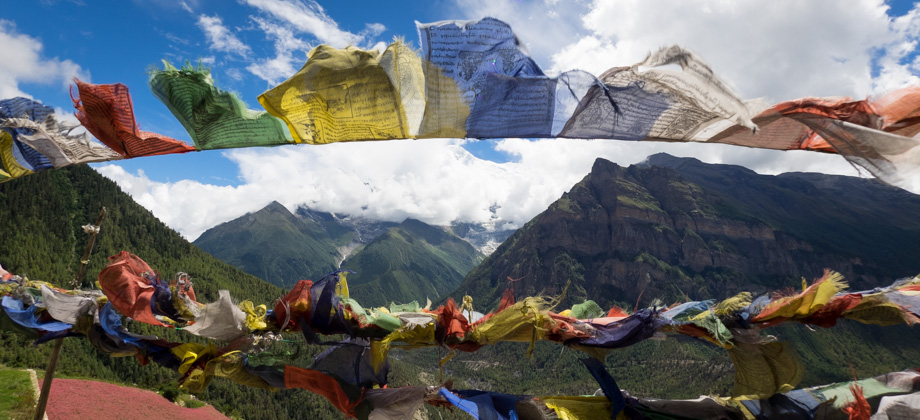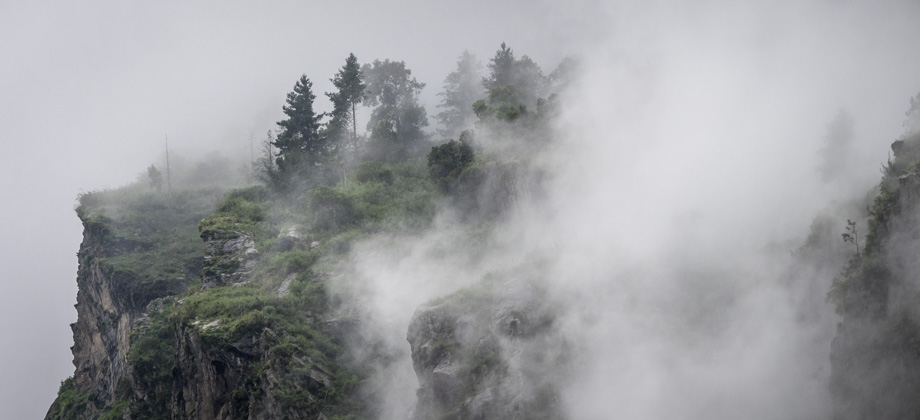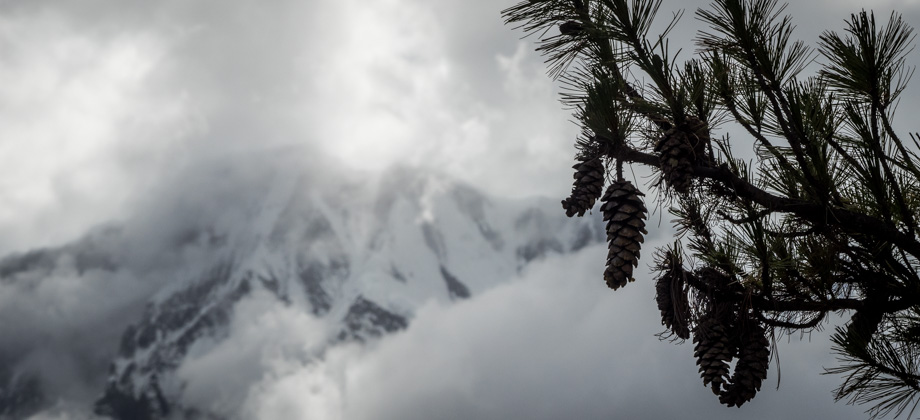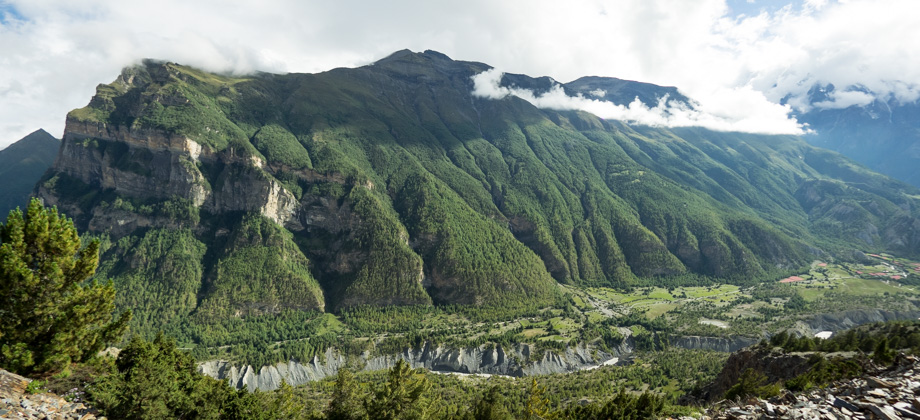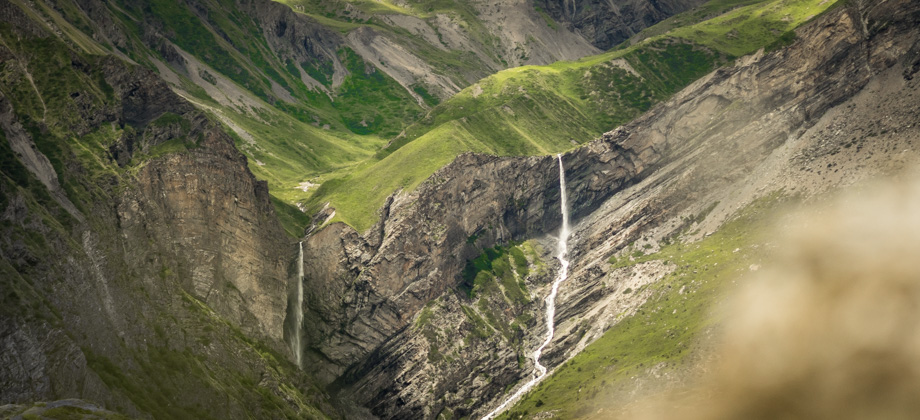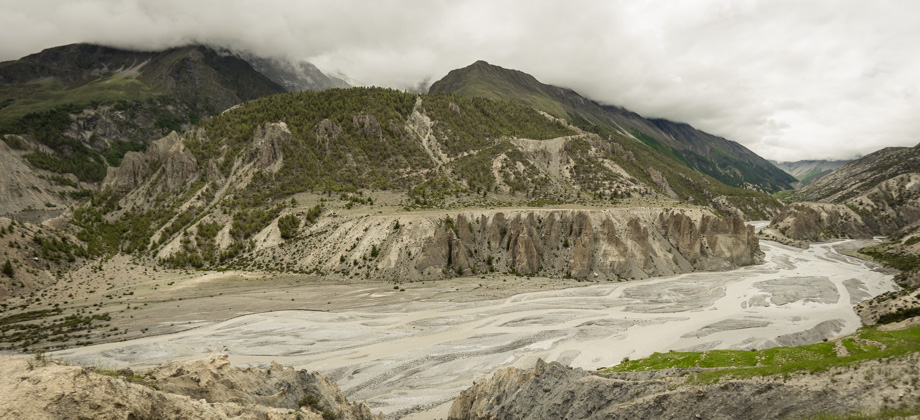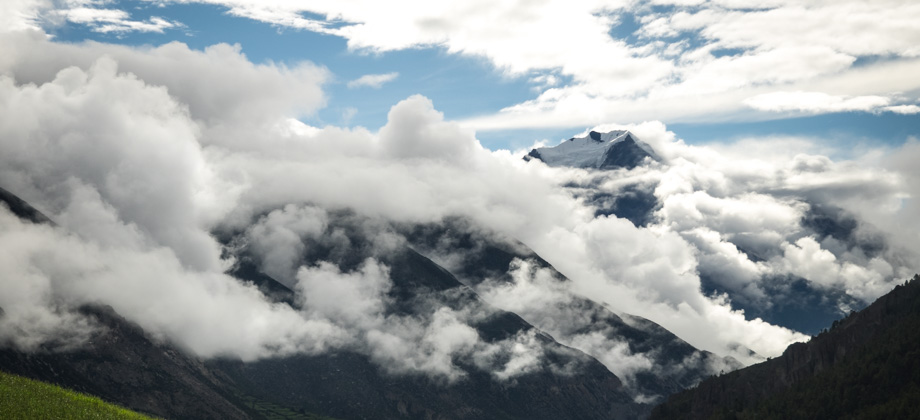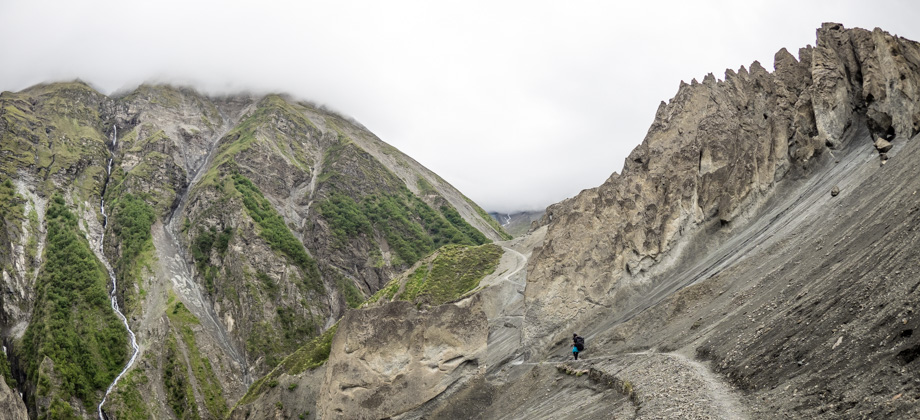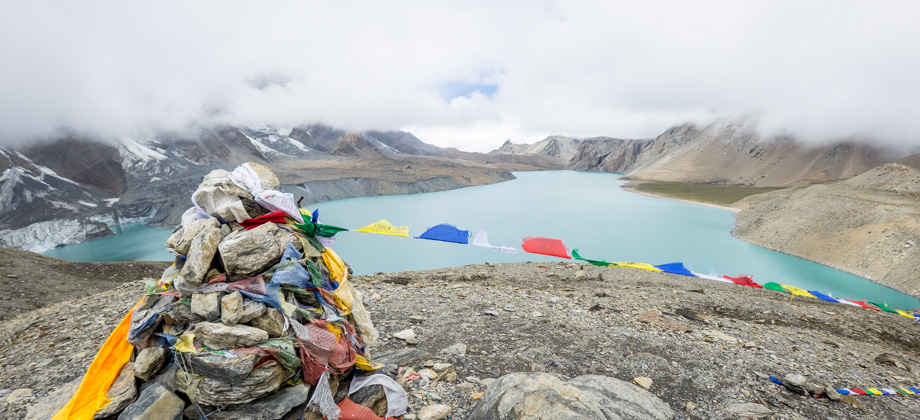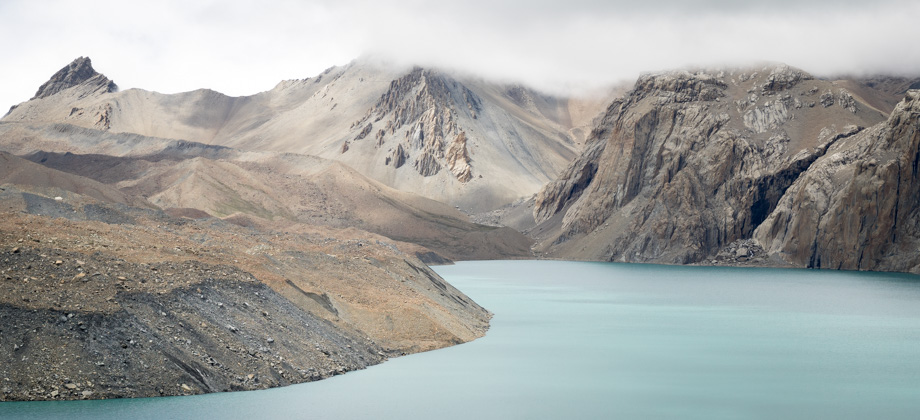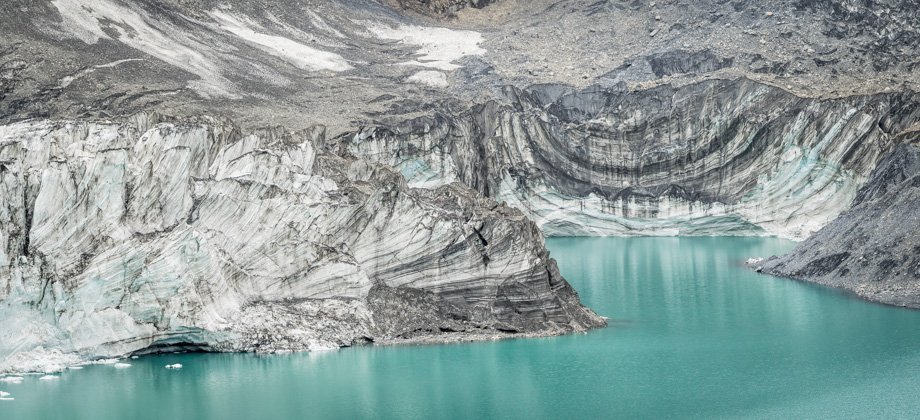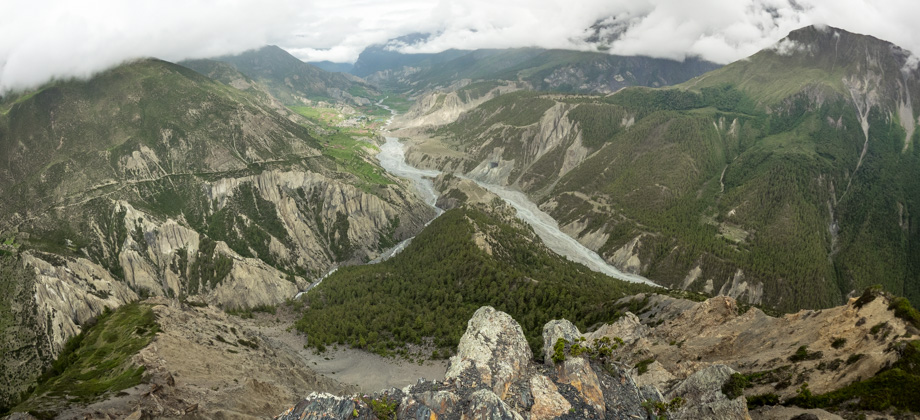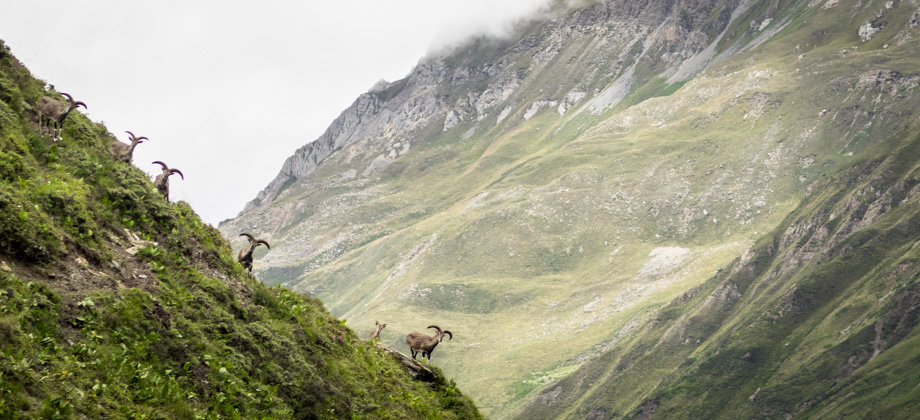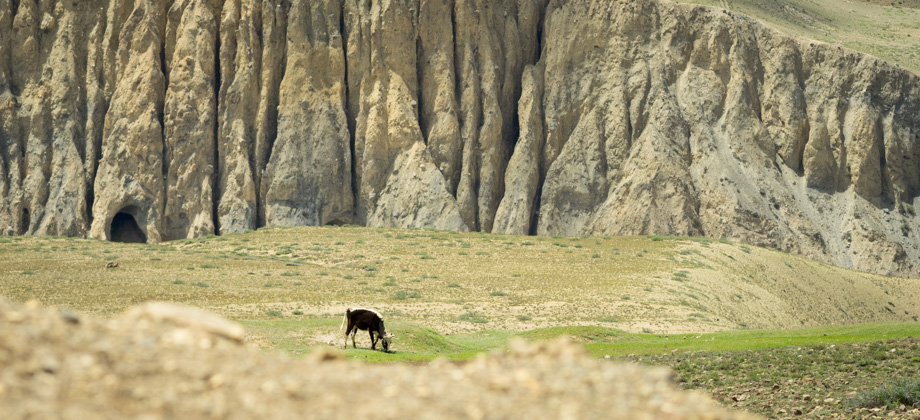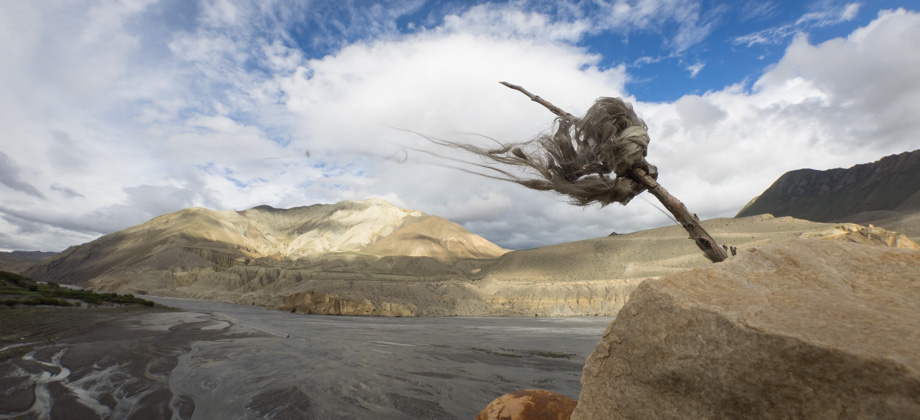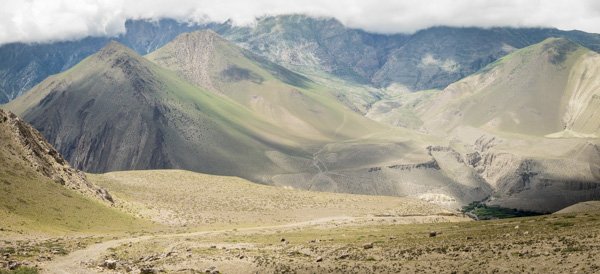ACT Day 04 - Danakyu to Thanchok
Mossy Forest

The hamlet of Danakyu

(
elevation : 2250 m) was completely blanketed in mist that morning, so much so that we could barely see the building that was across the road from us. So once again, we had our breakfast of pancake and honey (
NPR280/2) with Tibetan bread (
NPR220/2) to take-away, whilst waiting for the mist to clear.
The clouds still hugged the hills by the time we set off, but at least we could see down the road. After a kilometre, we came upon a path that dropped down the slopes on the right of the road. The path led directly to a wooden bridge that circumvented a waterfall that flowed over the road just up ahead. From there, hewn rocks ascended the hill and into the moist forest, with various purple flowers such as louseworts
(Pedicularis spp.) and mallows
(Malva spp.) lining the sides of the trail.
 The wooden bridge
The wooden bridge
The mist rolled in once again as we ascended, and it blanketed the rocks with a layer of moisture that left everything wet and very slippery. The hewn steps continued to ascend the hill and past large overhanging boulders as the trail traversed the sides of a rocky cliff. Tiny rivulets of water ran across and sometimes down the steps as the water that flowed off the cliff to our left was channeled ever downwards. The ghostly visage of trees pierced through the ethereal mist to our right, as the multiple layers of trees behind them gradually faded into the whiteness of the mist.

A dog
(Canis lupus familiaris) had followed us up the trail from the hamlet below, and was both looking for company and was keeping us company. The dog continued to follow us, and stopped whenever we did, as the trail cut straight across the switchbacking road multiple times. It had also begun to drizzle by then, but the dense forest canopy filtered the fine droplets, and the only indication that we had was the occasional pitter-patter of drops on the leaves around us.
We were now in the mossy forest (
elevation : ~2500 m) and the ubiquitous moss had covered almost every surface. Fungi of all types and other
epiphytes dominated the forest. Higher fungi belong to the subkingdom called 'Dikarya', which is composed of two divisions:
Ascomycota, members of which are known as sac fungi, and
Basidiomycota. By then, I had already spotted two species of sac fungi. The first was a pathogen called bud blast (
Pycnostysanus azalae), and the dark bristles of the fungus had completely covered an aborted flower bud of a rhododendron
(Rhododendron sp.). The other was a lichenised fungi called white fungus. Most lichen appear to have plant characteristics, and in this case, its composite structure appeared to produce leafless 'branches'. Lichen that have coral-like structures like this are referred to as 'fruticose lichen'.
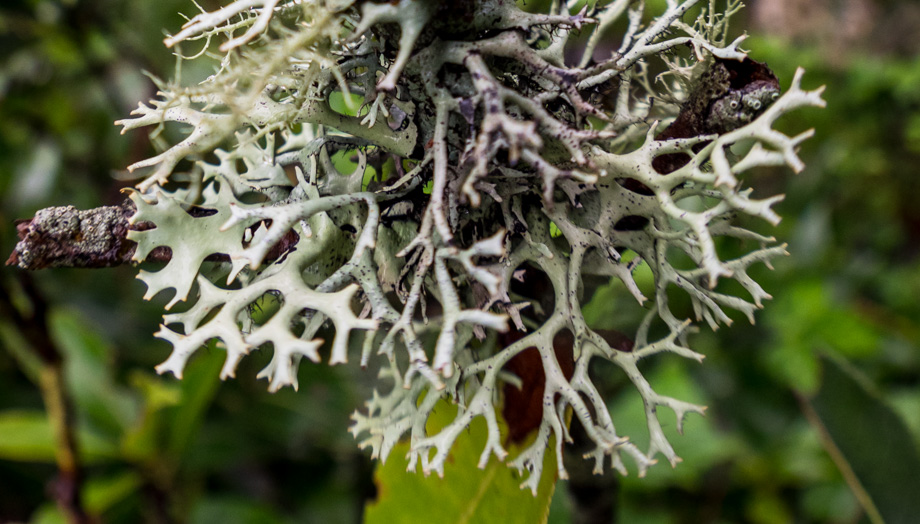 White fungus (Everniastrum nepalense)
White fungus (Everniastrum nepalense)


 A dog (Canis lupus familiaris) had followed us up the trail from the hamlet below, and was both looking for company and was keeping us company. The dog continued to follow us, and stopped whenever we did, as the trail cut straight across the switchbacking road multiple times. It had also begun to drizzle by then, but the dense forest canopy filtered the fine droplets, and the only indication that we had was the occasional pitter-patter of drops on the leaves around us.
We were now in the mossy forest (elevation : ~2500 m) and the ubiquitous moss had covered almost every surface. Fungi of all types and other epiphytes dominated the forest. Higher fungi belong to the subkingdom called 'Dikarya', which is composed of two divisions: Ascomycota, members of which are known as sac fungi, and Basidiomycota. By then, I had already spotted two species of sac fungi. The first was a pathogen called bud blast (Pycnostysanus azalae), and the dark bristles of the fungus had completely covered an aborted flower bud of a rhododendron (Rhododendron sp.). The other was a lichenised fungi called white fungus. Most lichen appear to have plant characteristics, and in this case, its composite structure appeared to produce leafless 'branches'. Lichen that have coral-like structures like this are referred to as 'fruticose lichen'.
A dog (Canis lupus familiaris) had followed us up the trail from the hamlet below, and was both looking for company and was keeping us company. The dog continued to follow us, and stopped whenever we did, as the trail cut straight across the switchbacking road multiple times. It had also begun to drizzle by then, but the dense forest canopy filtered the fine droplets, and the only indication that we had was the occasional pitter-patter of drops on the leaves around us.
We were now in the mossy forest (elevation : ~2500 m) and the ubiquitous moss had covered almost every surface. Fungi of all types and other epiphytes dominated the forest. Higher fungi belong to the subkingdom called 'Dikarya', which is composed of two divisions: Ascomycota, members of which are known as sac fungi, and Basidiomycota. By then, I had already spotted two species of sac fungi. The first was a pathogen called bud blast (Pycnostysanus azalae), and the dark bristles of the fungus had completely covered an aborted flower bud of a rhododendron (Rhododendron sp.). The other was a lichenised fungi called white fungus. Most lichen appear to have plant characteristics, and in this case, its composite structure appeared to produce leafless 'branches'. Lichen that have coral-like structures like this are referred to as 'fruticose lichen'.


